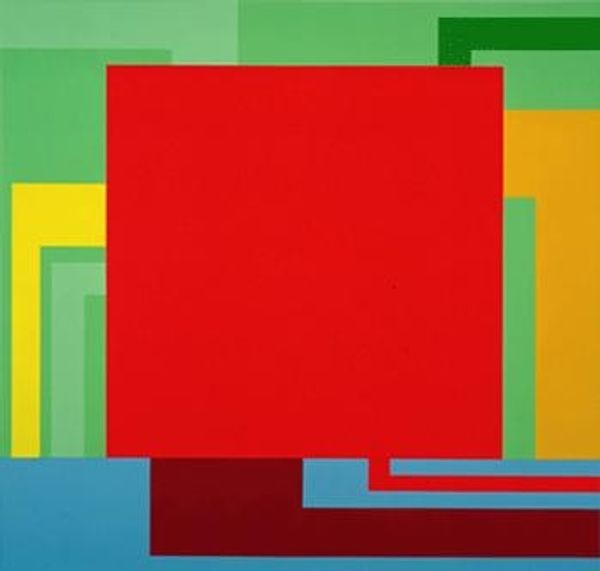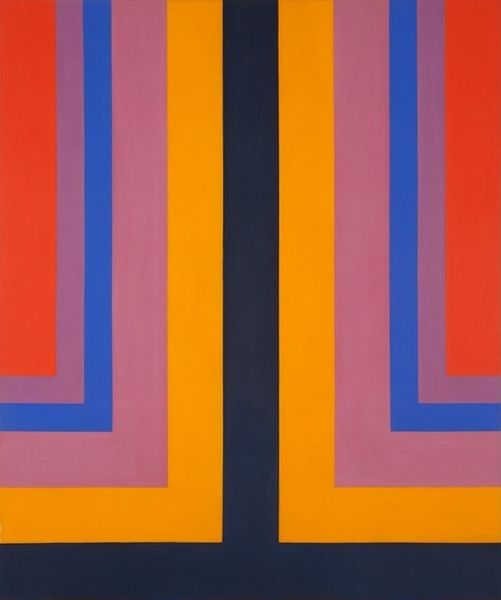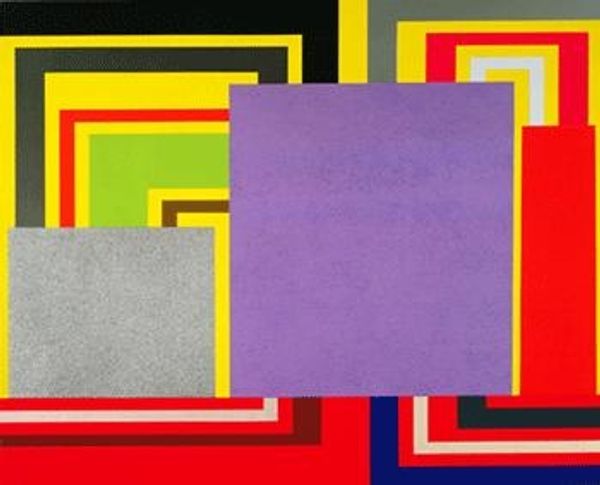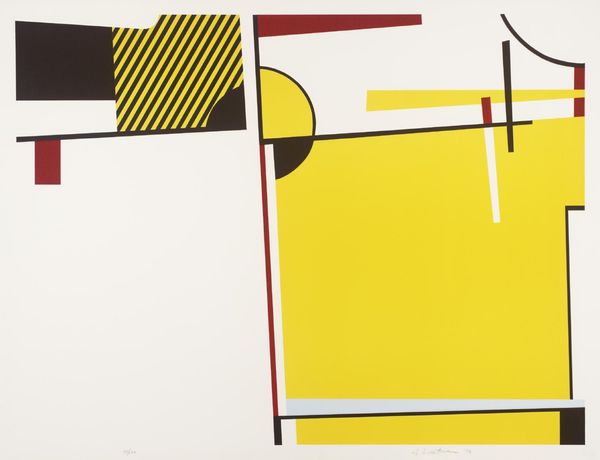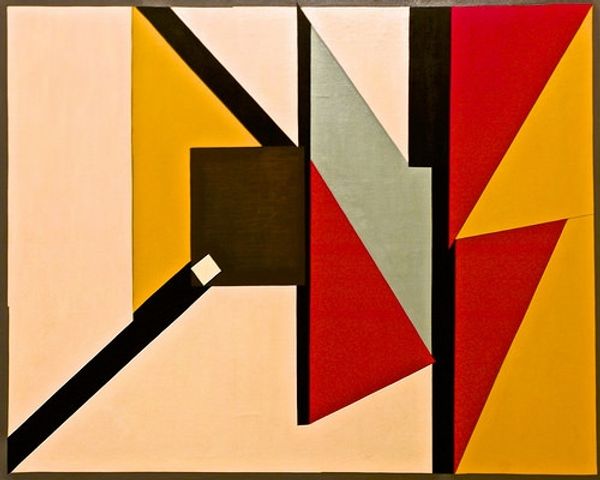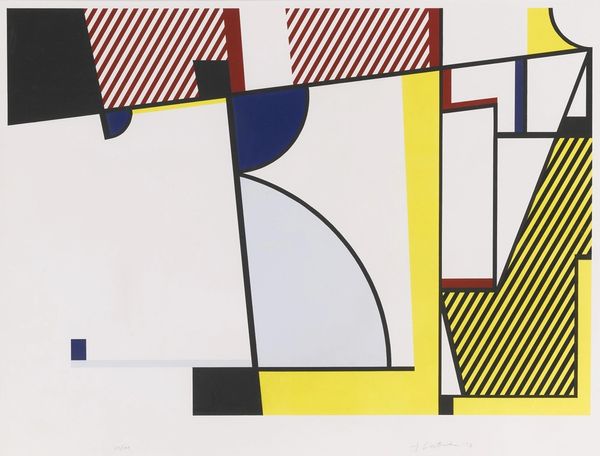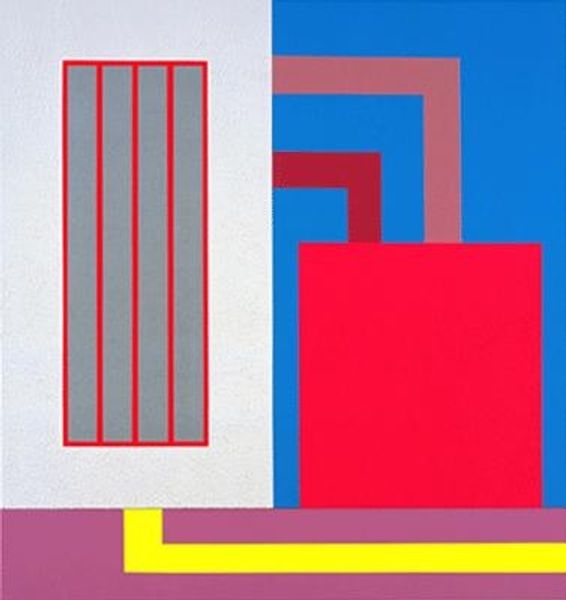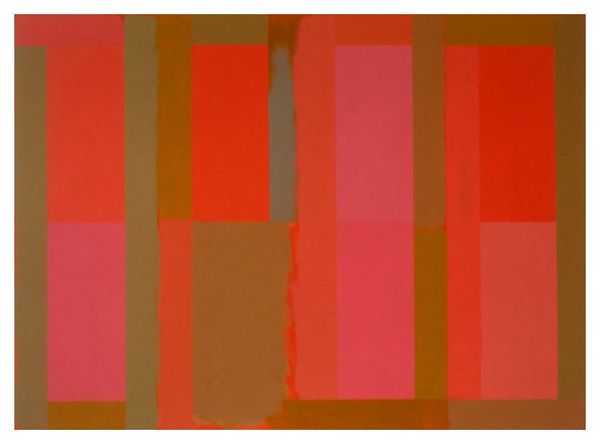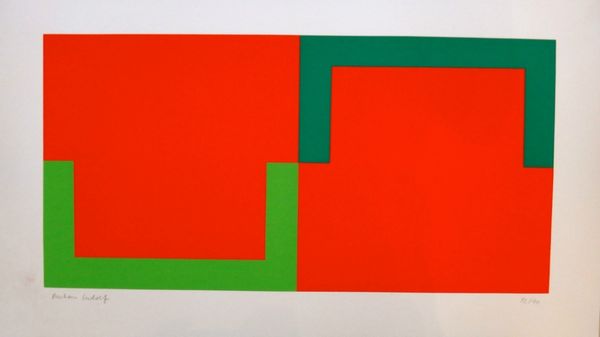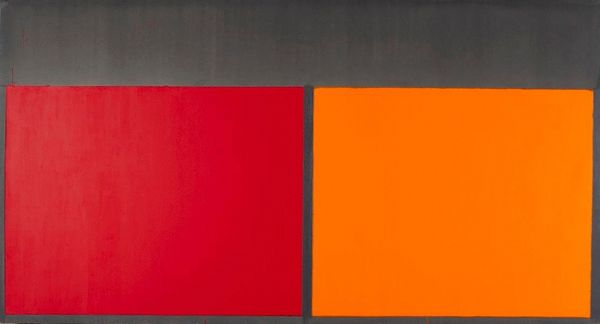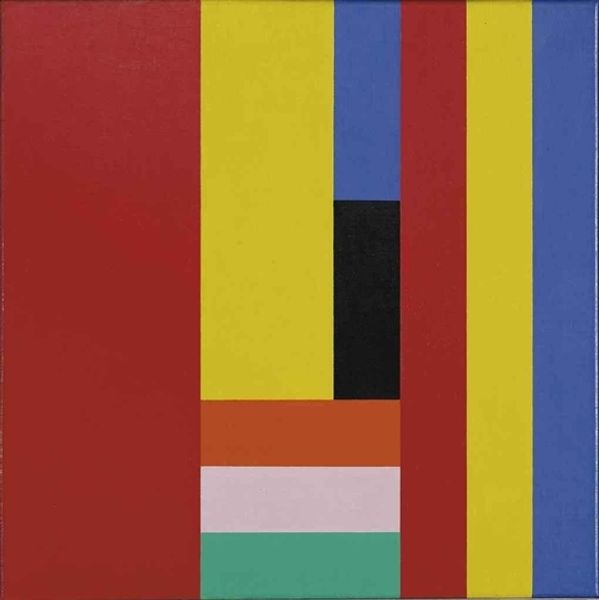
Copyright: Peter Halley,Fair Use
Curator: Peter Halley's "Double Elvis" from 1990. An acrylic on canvas, its geometric shapes and contrasting colours really jump out. Editor: Visually, it hits me as quite stark, even with the bright hues on one side. There's a severity, a certain coldness despite the so-called playful pop-art palette. Curator: Absolutely, the "prison" and "cell" motifs Halley frequently employed are clearly at work here. The squares symbolize confinement. Note how even the lively yellow, pink, and orange can't break that underlying sense of containment. Editor: That reading tracks historically, reflecting anxieties about social control and the digital age. We are increasingly tracked and monitored in a neoliberal dystopia where individual liberty is compromised, a "jail" indeed. What does it mean for the Elvis allusion, then? Is there a subtle message here? Curator: The repetition, of course, evokes Warhol's Elvis imagery—commenting on mass culture and the idea of the "copy." By juxtaposing this celebrity image – Elvis- with these stark geometric forms and contrasting colour sets, Halley is referencing the symbol's pervasiveness, its loss of original meaning through constant reproduction, much like an icon divorced from sacred context in contemporary society. The division into two contrasting sets reinforces the notion of binaries and duplications in our lives Editor: Yes, and that duality is enhanced by the distinct colour schemes on either side. The first vibrant panel versus the almost clinical grayscale of the second creates a dichotomy of visibility versus invisibility, of cultural prominence against cultural erasure. Curator: The interplay is intentional, offering, in my opinion, a very astute, very critical commentary of post-modern society. Halley presents a contemporary digital space stripped of substance. Even "Elvis" feels somehow vacant. Editor: And doesn’t that speak volumes about celebrity culture then and now? "Double Elvis", through Halley's geometric abstractions, critiques how media manipulates and duplicates both imagery and ideology in ways that simultaneously draw us in and imprison us. It feels both relevant and disturbingly prescient even today. Curator: Exactly. Halley's use of color and form to signal these tensions feels as powerful now as it must have three decades ago, proving yet again how relevant postmodern artworks still resonate today. Editor: Definitely a case of the echoes of the past reverberating loudly into our present. I won't see celebrity icons or geometric abstraction the same way again.
Comments
No comments
Be the first to comment and join the conversation on the ultimate creative platform.
